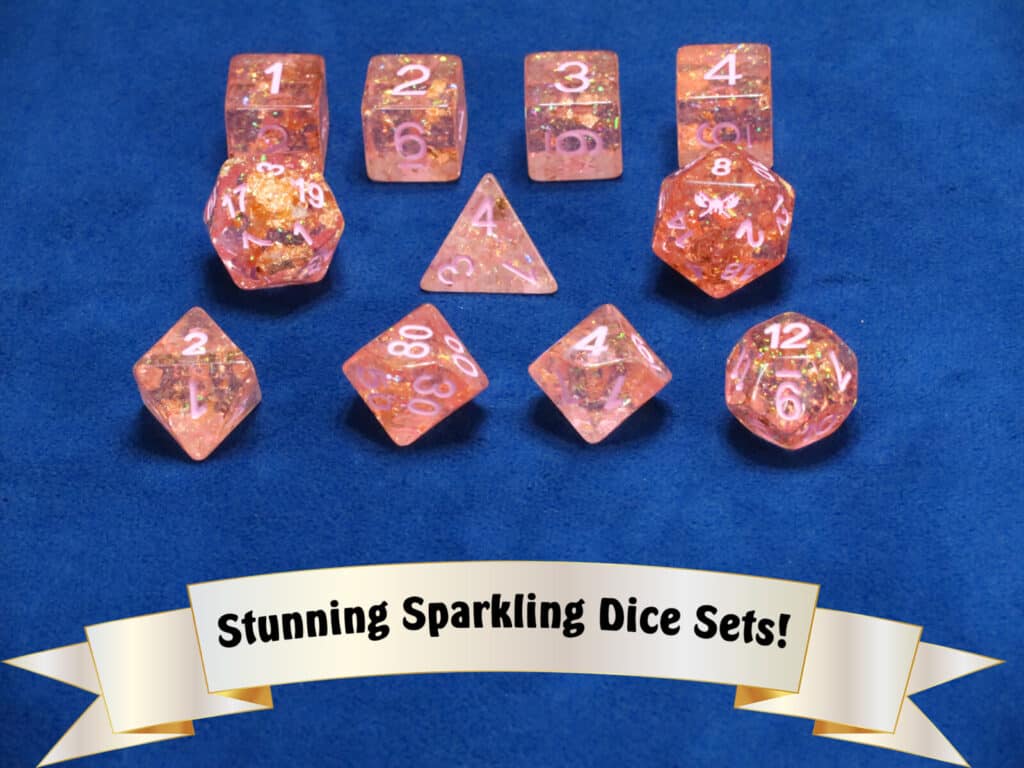Ah the Lucky feat. Arguably one of the most game-breaking and aggravating feats that can drive a 5E DM nuts. As a player this is a feat I look for no matter what class I’m playing. The ability to grab advantage on three rolls during a session and not have to claim the advantage until I know I need it? The ability to have a 19/20 chance of canceling out the big bad’s critical hit against me? Yes, please!
Lucky feat is designed to be incredibly powerful, and it does just that. Some DMs think it’s OP. Many players think it’s great. Some argue that it is, in fact, game breaking as in many cases it almost works like legendary actions that creatures like dragons have to just make a save. In other words, it’s a pretty divisive feat in 5E, as we covered in my Lucky 5E feat guide.
So how is a DM supposed to deal with an arguably broken feat that is undeniably overpowered?
A 5E DM has multiple options for dealing with the lucky feat. Understanding the exact written mechanics, rules around feat use, and clever counters can help a DM deal with the lucky feat without having to ban it completely (which is also an option).
While just straight out banning it could be the easy answer – it’s not elegant and many GMs understandably back away from this solution in favor of something that seems less restrictive fairer to the table. The good news is that there are options.

How to Handle the 5E Lucky Feat as Game Master
While difficult, there are multiple ways to handle the lucky feat in 5th Edition as DM. Keep in mind these won’t work in every campaign, but they give the full array of options for easing some of the pain this feat can cause.
IMPORTANT: Lucky is supposed to be a powerful feat, so you’re not trying to cut a player’s legs out from under them and make this feat worthless. What you’re trying to do is make it tenable instead of game breaking while still making it a solid pick if you allow it.
For big parties (5, 6, or 7+) I actually would set ground rules either banning it or limiting it because 7 players with lucky is 21 re-rolls per long rest.
Good luck overcoming that without accidentally TPK’ing your entire party.
Option #1: Humanoid NPCs Can Also Have the Luck Feat
This is a feat and therefore when your party are facing thinking humanoid NPCs, they can have this feat if they are high enough level. I haven’t met a DM complaining about the lucky feat who realized they could implement this, but it makes perfect sense. If these are the skills, blessings, and boons available to the party, they are going to be the same ones available to others in this world.
When two lucky feats are used against each other they cancel out, meaning the original roll stands and no more re-rolls are allowed.
There are several reasons I like this option and believe it is the best one, and the most versatile, overall.
- This limits the “damage” a party full of PCs with the lucky feat can do in a boss fight with NPCs while still keeping the feat powerful throughout the campaign
- Judicious use can cause players to limit their own use to when it’s needed most (i.e. the more a party uses it, the more NPCs appear with it)
- It’s powerful and makes a single bad NPC extra strong, which can be needed to deal with the action economy of 1 NPC vs 4+ party of adventurers
- The rules apply to everyone
- Dueling luck feats cancel each other out – the party likely still has more, but it forces them to burn more instead of saving them
Lucky is still a powerful feat in this case, but it does introduce some basic counters to it when needed, especially with individual big bad NPCs.
Option #2: Hardline the Rules with This One Feat
There are some commonly used “home rules” with this feat that cause a lot of problems for DMs. While I’m usually not big on being a rules lawyer, for this feat setting the standards for how it is going to be dealt with is crucial.
They can roll a die when they know what the die roll is but before the result.
The trouble with most tables is that the DM doesn’t give numbers of dice rolled behind the screen but just say the player passed or failed. This breaks immersion but at the same time many players would argue (and I fully see their point as a player myself) that just “guessing” on success seems to powerful the other way.
This is especially true with saves.
While not perfect, the easiest solution I’ve found is when they give a save number that is a fail is me saying “Do you have any rolls left from your lucky feat and would you like to use one?”
This way they get their chance before knowing what happens, the hint is dropped, and then they can live with their choice either way.
Very few tables rules lawyer this feat to as written, though that is an option. If you do that, set the expectations before it comes up. If not, set the expectations for how a situation will work before you get to it so players know how it’s home ruled.
But a roll from the Lucky feat should never come after damage is announced. And while some players would argue they should know a critical hit versus just getting hit – I don’t think that’s necessarily true. Lucky is strong enough without that extra leg up.
I feel comfortable enough running a campaign that I’m not necessarily a hardliner on this, but it’s worth pointing out that playing as the rules say and then loosening up is not the worst strategy – especially for beginning DMs working to get better.
Oh and before I forget: Lucky allows ONE and only one extra die to be rolled. A player can’t use three Lucky dice to reroll a critical check. Don’t let them do this: this unbelievably common house rule is broken and absolutely makes lucky impossible to deal with.
Related Article: Check out changes to the Lucky Feat in our complete DnD One Lucky Feat Guide
Option #3: Set Up Scenarios Where Long Rests Are Impossible or Infrequent
Have a desperate chase through the Fey Wild, borrowing the Wild Hunt from The Dresden Files to strike fear into a well-read party who understands short rests are all they get over multiple sessions.
End a session at a good cliff hanger that does not include making camp, thus depriving them of a long rest and forcing them to continue into the next section of the adventure.
Run a jailbreak where the pursuing jailors are a relentless force that the party knows it must escape because direct conflict is death.
Have a mission on a timeline so there are only so many long rests that can be taken lest they be too late and dire consequences take place (the players must know there’s a timer).
These are all scenarios where short rests become very important and without the long rests, the luck points don’t reset. In many campaigns it’s just assumed each session ends with a long rest. That’s not a rule. If that isn’t the case, then you have plenty of options for making campaigns more interesting by ratcheting up the suspense and sense of urgency.
The fewer instances of lucky being used is just an added bonus at that point.
Option #4: Ban It from Game
This isn’t an elegant solution, but it is undeniably effective. Now if it’s banned for players, it must be banned for NPCs, as well. You can’t have it both ways.
I used this in one campaign, but the reason was actually simple: because in the setting of this campaign magic was corrupted by a Chaos God whose insanity was corrupting luck in all forms. So Lucky wasn’t available to anyone.
With that setting I also compromised with the halfling rogue to replace the halfling’s ability to re-roll a one with the Alert feat, and gave the wild magic sorcerer a dragon blood sorcerer feat instead of the reroll dice trait he would otherwise receive.
Feats are an optional rule set. That means the DM has the right to use as many or as few as he/she sees fit. While many go all or nothing, most people allow feats.
Banning a single one is the DM’s prerogative and if having it in the game makes it much harder for them to create a great gaming experience for the table, then that is the right move.
This worked out incredibly well for a few reasons:
- I set up these conditions in the zero session of the campaign when world building was being discussed and/or revealed so everyone knew exactly how this worked, and NPCs/Enemies were given the same restrictions and bad luck surges
- Characters who lost something gained something powerful in return – which was only fair
- Expectations were built even before zero session and I stood by them firmly, but not antagonistically
- I made it clear this decision was plot/world related which made a huge difference
In Conclusion
Lucky is a powerful feat. Many argue too powerful. Despite that, there are multiple ways for a DM to deal with it in a way that isn’t unfair, overly unbalanced, or game breaking. There are compromises that can be made, tricks that can be used, and good planning to make sure that lucky doesn’t become a rewrite to the campaign because every roll is challenged.
Follow the advice in this article and you’ll have the tools you need to deal with the 5E lucky feat as DM in any D&D session.
Other DnD Articles You May Enjoy…
- 5E Sorcerer Vs. Wizard
- 5E Fighter Vs Barbarian
- Kenku Character Building 5E
- Crossbow Expert 5E
- Dual Wielder Feat 5E

Proud to embrace the locally created moniker of “Corrupt Overlord” from one of the all time great Lords of Waterdeep runs, Shane is one member of the Assorted Meeples crew and will be hard at work creating awesome content for the website. He is a long-time player of board games, one time semi-professional poker player, and tends to run to the quirky or RPG side of things when it comes to playing video games. He loves tabletop roleplaying systems like Dungeons & Dragons, Pathfinder, Werewolf, Fate, and others, and not only has been a player but has run games as DM for years. You can find his other work in publications like Level Skip or Hobby Lark.

